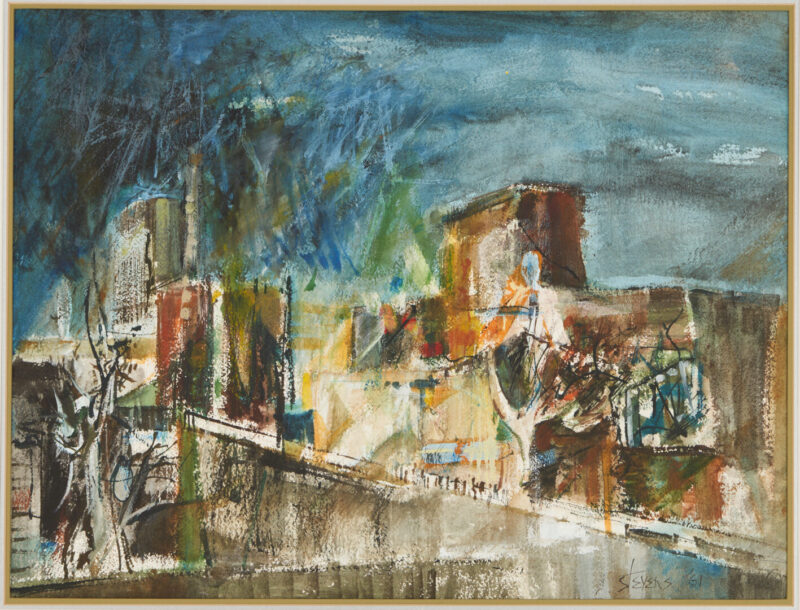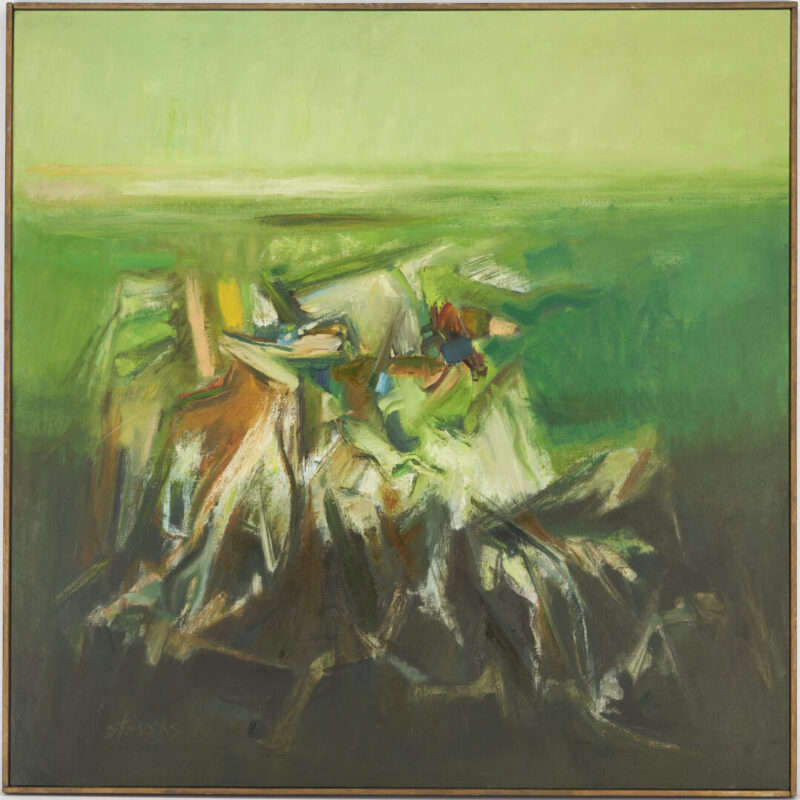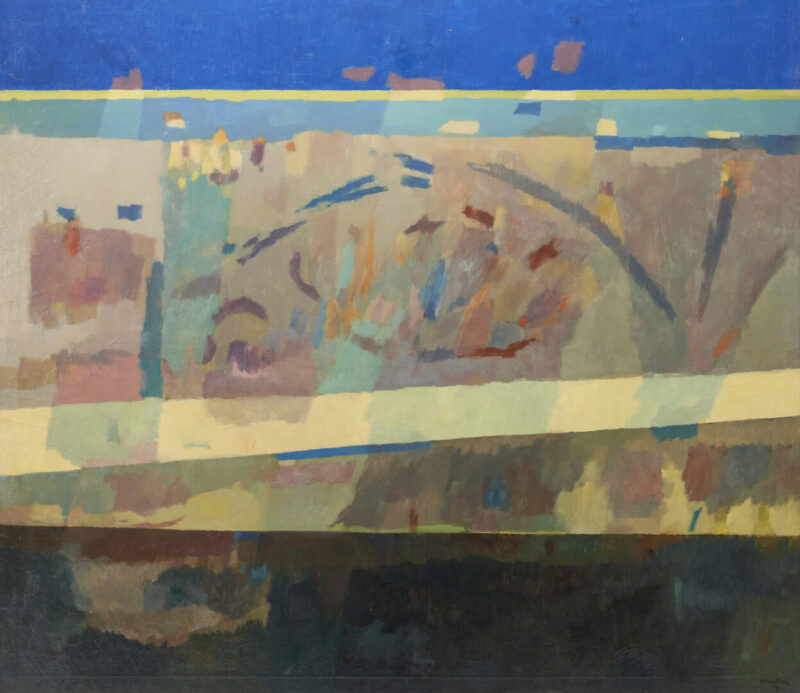Case Study: Walter Hollis Stevens, George Cress, & The Knoxville Seven
The Knoxville Seven were a group of progressive artists related to the University of Tennessee, Knoxville, who left an indelible impact on the art of the region beginning in the 1950s. The group consisted of painters C. Kermit “Buck” Ewing, Carl Sublett, Walter Hollis Stevens, Robert Birdwell, Joanna Higgs Ross, and Richard Clarke, along with the sculptor Philip Nichols. George Cress is not a member of this group but played a similarly influential role while based in Chattanooga. These artists brought aspects of the flourishing Abstract Expressionist movement to East Tennessee by creating abstracted or entirely non-representational works of art that conveyed expressive emotional content despite the frequent absence of highly detailed figures and landscapes or clear narratives. Their roles as teachers at the University of Tennessee and other regional institutions allowed them to pass their avant-garde artistic interests on to a younger generation of Tennessee artists– many of whom still live, work, and teach in the area today–and in this way the influence of the Knoxville Seven continues.

Stevens was the Knoxville Seven artist who delved most deeply into abstraction, and his powerful, often explosive paintings are evidence of the potential of abstract forms to convey strong emotional, psychological, and art historical content. His gestural brushwork and highly worked canvases recall those of Willem de Kooning. In both cases, the artist’s internal, subjective ideas become manifest through the use of Surrealist techniques like automatism, in which the artist’s subconscious mind becomes the guiding force in the act of creation. De Kooning, like many Abstract Expressionists, was inspired by Surrealist art but was more interested in the abstracted forms of Joan Miro than the dreamlike realism of Salvador Dali.

The Knoxville Museum of Art states that Stevens and his Knoxville Seven compatriots created what are likely the first abstract artworks in East Tennessee. Southern abstract painters were a rarity in the middle twentieth century and the boldness and fortitude of these artists and their willingness to buck traditional ideas about art that still held fast in the region should not be understated. Indeed, Stevens himself weighed in on this topic at Knoxville’s Dogwood Arts Festival in 1963 when he unveiled new works entitled “Cultural Seat of the South”—an old bicycle seat on a pedestal recalling the biting conceptual art of Marcel Duchamp—and “All American City,” a Rauschenberg-esque assemblage of boards, a turpentine can, and an umbrella with a title taken from Look magazine, who had just awarded the city of Knoxville itself the same honorific. These juxtapositions of ignoble, everyday objects served not only as a statement about the hierarchies of art and commerce in the rapidly commercializing world but also as a rebuke of what Stevens may have perceived as stifling artistic climate in East Tennessee, especially when compared to that of New York (where he had staged a one-man exhibition in 1960) or other cultural centers with more progressive art scenes.

Today, Knoxville’s artistic community is thriving thanks to institutions like the Knoxville Museum of Art, the University of Tennessee, and the various galleries and art spaces located throughout the city. By collecting, studying, and appreciating the work of Stevens and the Knoxville Seven in the twenty-first century new generations of artists and art lovers in East Tennessee can honor the trailblazing work of these creators and celebrate our region’s unique artistic heritage.

If you have Knoxville Seven or George Cress art you are considering selling, visit our selling page for more information.
If you want to buy Knoxville Seven or George Cress art, sign up for our email list to be notified of upcoming auctions.
Images: Walter Hollis Stevens, “Knoxville II,” watercolor on paper; Walter Hollis Stevens, “Off-Shore II”, oil on canvas; George Cress, oil on canvas painting; Walter Hollis Stevens, “Little Ochre Island,” acrylic on canvas.
Works Cited: Moffatt, Frederick and Yates, Sam, “Walter Hollis Stevens (Exhibition Catalogue)” (1981). Ewing Gallery of Art & Architecture;”The Knoxville 7,” The Knoxville Museum of Art, https://knoxart.org/exhibitions/knoxville-seven/